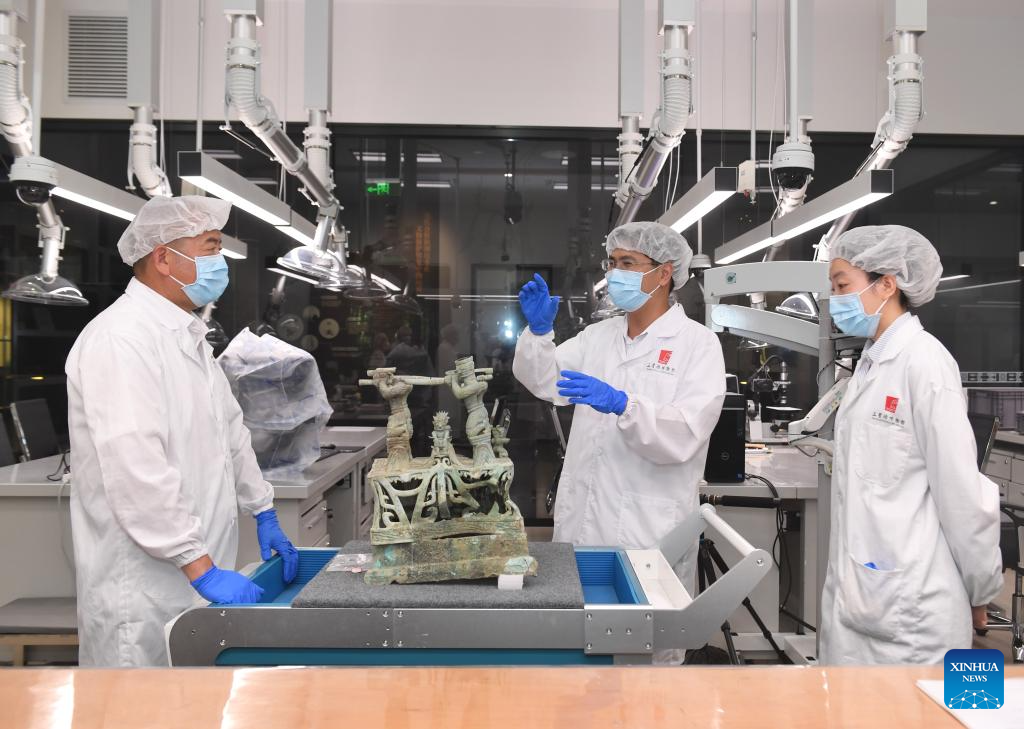
Guo Hanzhong (L), Yu Jian (C) and Xie Li discuss the restoration plan of a bronze altar at Sanxingdui Museum in Guanghan City, southwest China's Sichuan Province, May 30, 2023. (Xinhua/Liu Kun)
CHENGDU, June 11 (Xinhua) -- Guo Hanzhong was a small boy when some elderly people told him that "we have a treasure trove here in our village."
Back then, he had no idea that the "treasure" would be reborn in his own hands.
The 55-year-old man in the Sanxingdui Museum of southwest China's Sichuan Province is now skilled in the craft of restoring cultural relics. In the past decades, he and his colleagues have magically transformed numerous unearthed pieces, initially unrecognizable to archaeologists during excavation, into masks, statues, cups, and a towering bronze sacred tree about four meters tall.
In fact, in the past 39 years since he took this job, Guo, vice head of the cultural relics storage department of the Sanxingdui Museum, has restored more than 6,000 cultural relic items.
"Our job is like solving a jigsaw puzzle," he said. "You need to find the pattern and fix it little by little."
Discovered in the late 1920s, the Sanxingdui Ruins have been called one of the world's greatest archaeological finds of the 20th century. Covering an area of 12 square km, they are believed to be the remnants of the Shu Kingdom, dating back some 4,500 to 3,000 years. So far, more than 50,000 items of bronzeware, jade and gold wares, pottery and ivory artifacts have been unearthed at the site.
According to Yu Jian, vice head of the museum and an apprentice of Guo, his teacher "could tell where a piece fit when it was still in the pit."
Guo became a cultural relics restorer entirely by chance.
In the 1980s when archaeologists from the Sichuan Provincial Institute of Cultural Heritage and Archaeology arrived in his village to conduct excavations on the ruins, they lived in Guo's house.
At that time, the 16-year-old boy managed to secure a job working part-time with the team, helping them with the chores, digging at the site and buying vegetables.
Once he ground a stone into an axe, imitating the appearance of the unearthed cultural relics, and buried it in the soil to trick the archaeologists. The team leader saw the prank and remarked he was talented in archaeology.
It was the beginning of Guo's cultural relics restoration career.
Earlier in 1986, archaeologists discovered thousands of precious cultural relics, including a gold scepter and a bronze sacred tree, which aroused global interest.
It gave him opportunities to learn from experts not only from Sichuan, but also from the National Museum of China as well as the Palace Museum.
The exquisite bronze tree, adorned with birds perching on its branches, was split into fragments.
"The trunk had fallen into three parts while the branches were in 18 pieces," recalled the man. "The birds, the fruits and other decorations of the tree were in very small fragments."
Guo and his master Yang Xiaowu decided to categorize the pieces first before starting from the basic structure and fitting the parts patiently, following the traces of the fracture.
It took Guo and his master Yang Xiaowu about seven years to piece together what was one of the largest single-piece bronzeware in the world.
Throughout the years, Guo not only became a skillful restorer, but also devised some handy tools like the ones used to clean the soil on the pieces or reinforce the accessories.
Sitting in a small office about 20 square meters for years, Guo grew from a naughty boy into a calm man. He gradually came to understand what his master told him: "You need to be extremely patient and able to endure loneliness."
In retrospect, he said to Xinhua: "When I took this job, I was merely trying to make a living. But now I love this job so much that I feel responsible for passing down my techniques to young people."
Now the most senior restorer in the Sanxingdui Museum, he has several apprentices including Yu Jian the vice curator and Xie Li, a woman from Generation Z.
"While doing the work, one might always come across situations that we have never seen before," Guo said. "Then we should both be creative and follow the rules, or the information that the cultural relics carried."
The words may sound vague but Xie understood well. "If there is something that we are not sure about, we should just leave it there."
With all the new equipment and technology, the work still seemed dull and frustrating at times. "You should really love it, before doing it well," she concluded.
"To make something out of debris through our own efforts, this really grants us a sense of achievement," said Yu Jian.
On July 28, the new building of Sanxingdui Museum will open to the public. Guo, Yu, Xie and other cultural relic restorers are busy working to present the treasures to visitors.
"By then, I am sure that all the visitors, no matter domestic or from abroad, after seeing the exhibits will marvel at our culture," said Yu proudly. ■
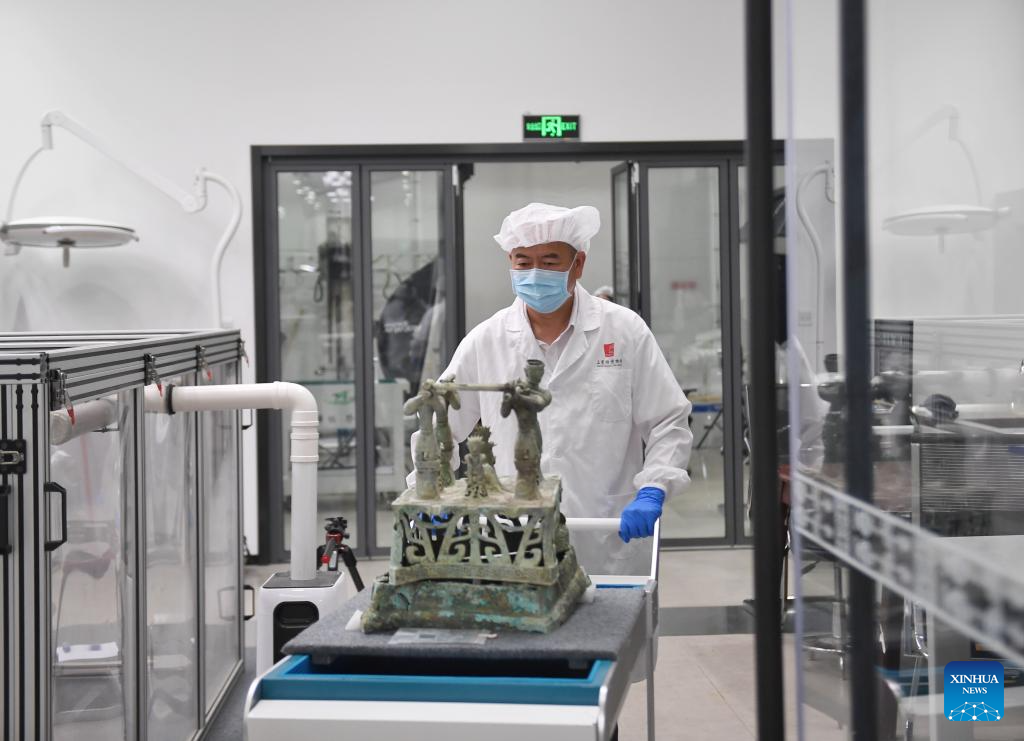
Guo Hanzhong takes out a bronze altar at Sanxingdui Museum in Guanghan City, southwest China's Sichuan Province, May 30, 2023. (Xinhua/Liu Kun)
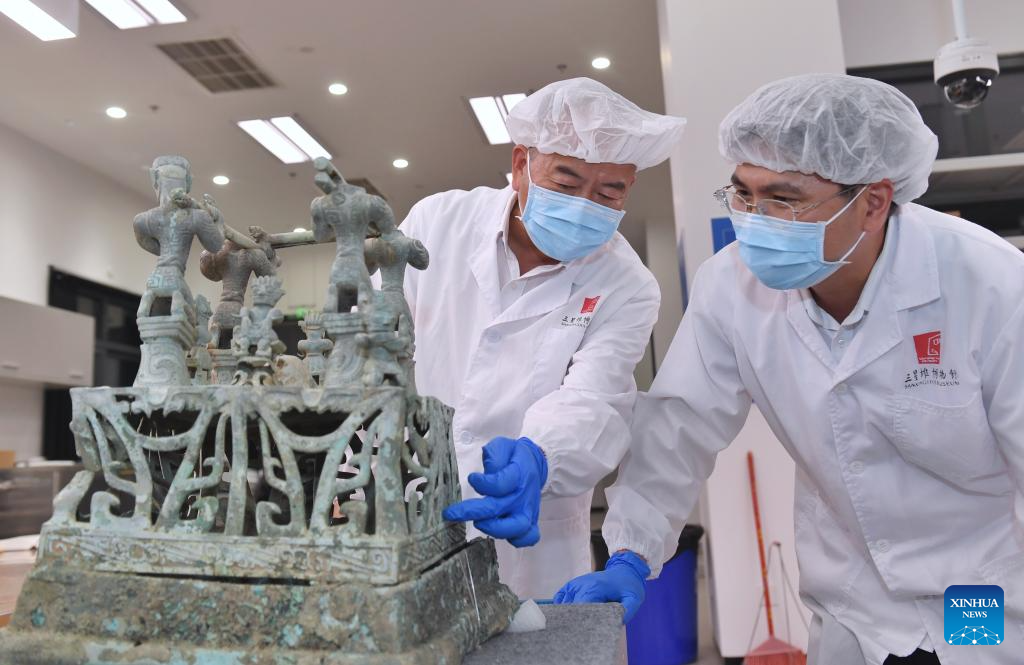
Guo Hanzhong (L) and Yu Jian discuss the restoration plan of a bronze altar at Sanxingdui Museum in Guanghan City, southwest China's Sichuan Province, May 30, 2023. (Xinhua/Liu Kun)
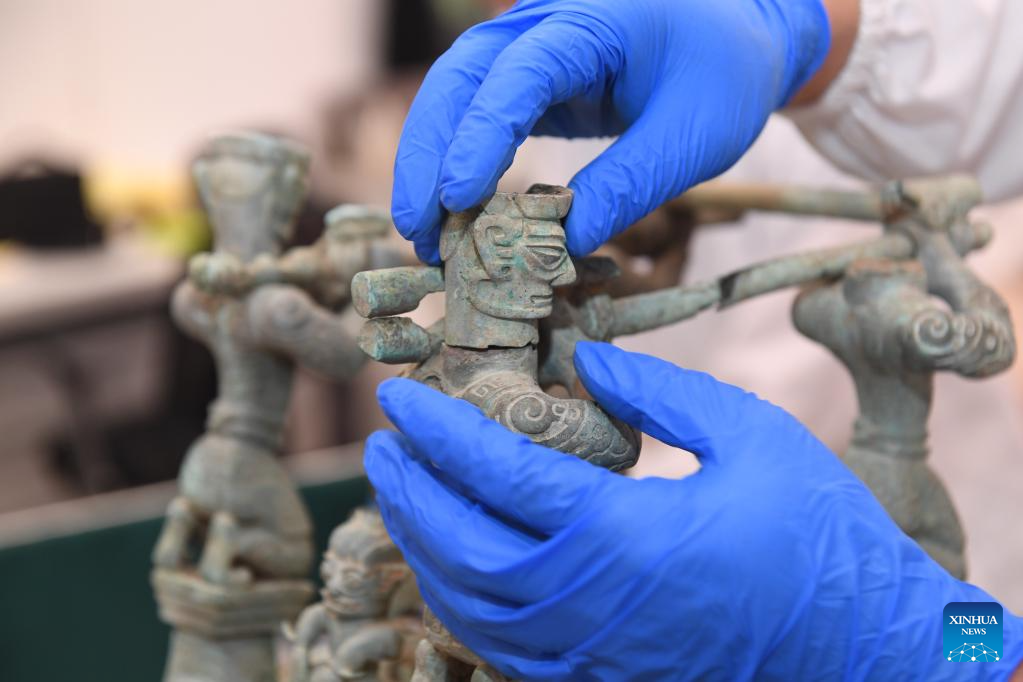
Guo Hanzhong pairs two parts of a bronze altar at Sanxingdui Museum in Guanghan City, southwest China's Sichuan Province, May 30, 2023. (Xinhua/Liu Kun)
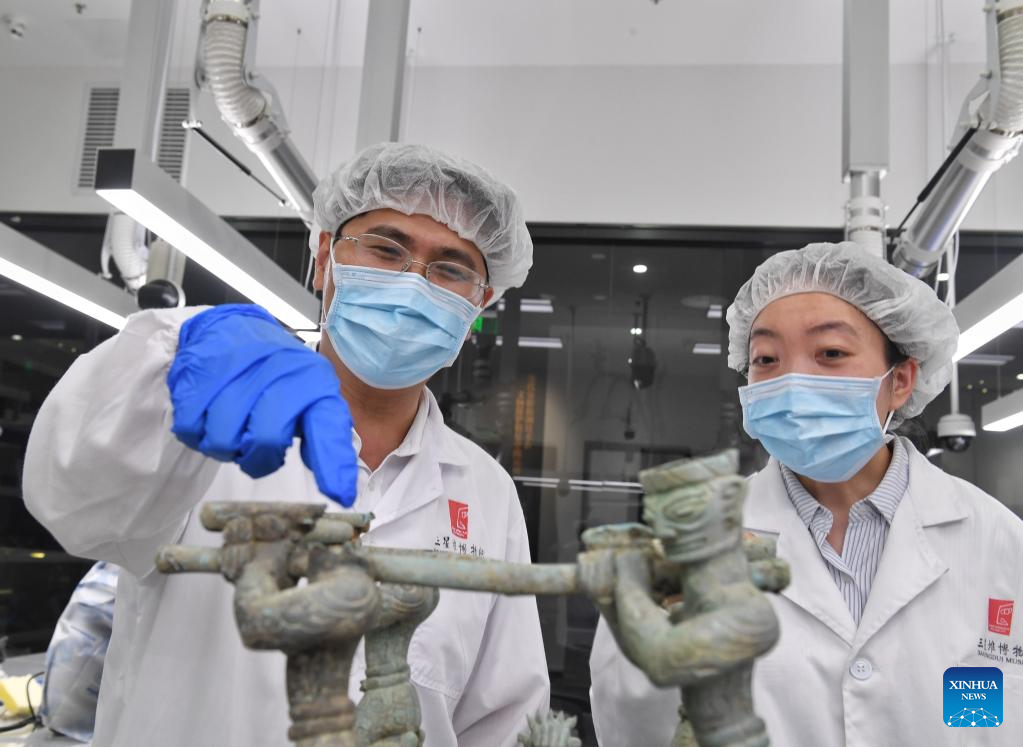
Yu Jian (L) and Xie Li discuss the restoration plan of a bronze altar at Sanxingdui Museum in Guanghan City, southwest China's Sichuan Province, May 30, 2023. (Xinhua/Liu Kun)



